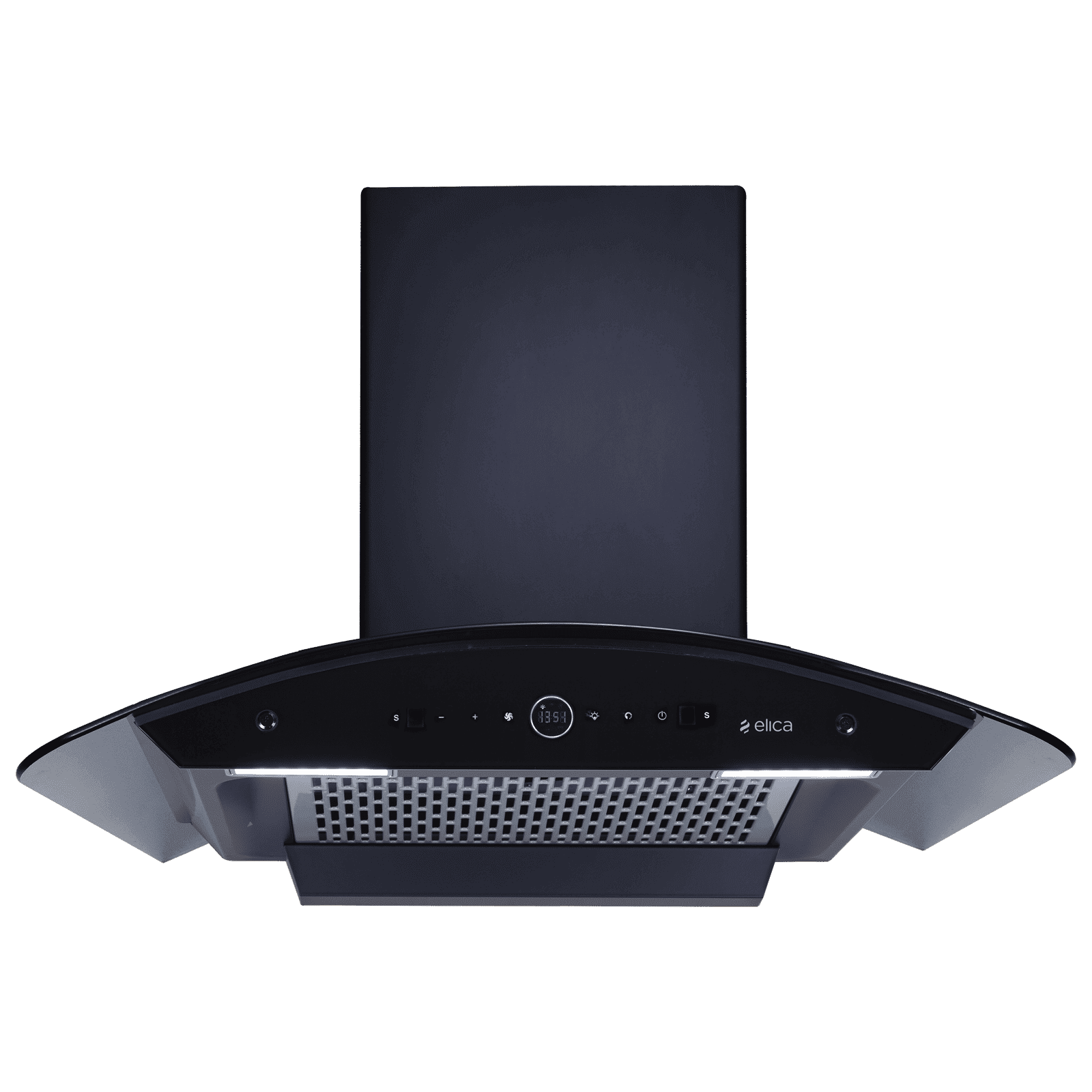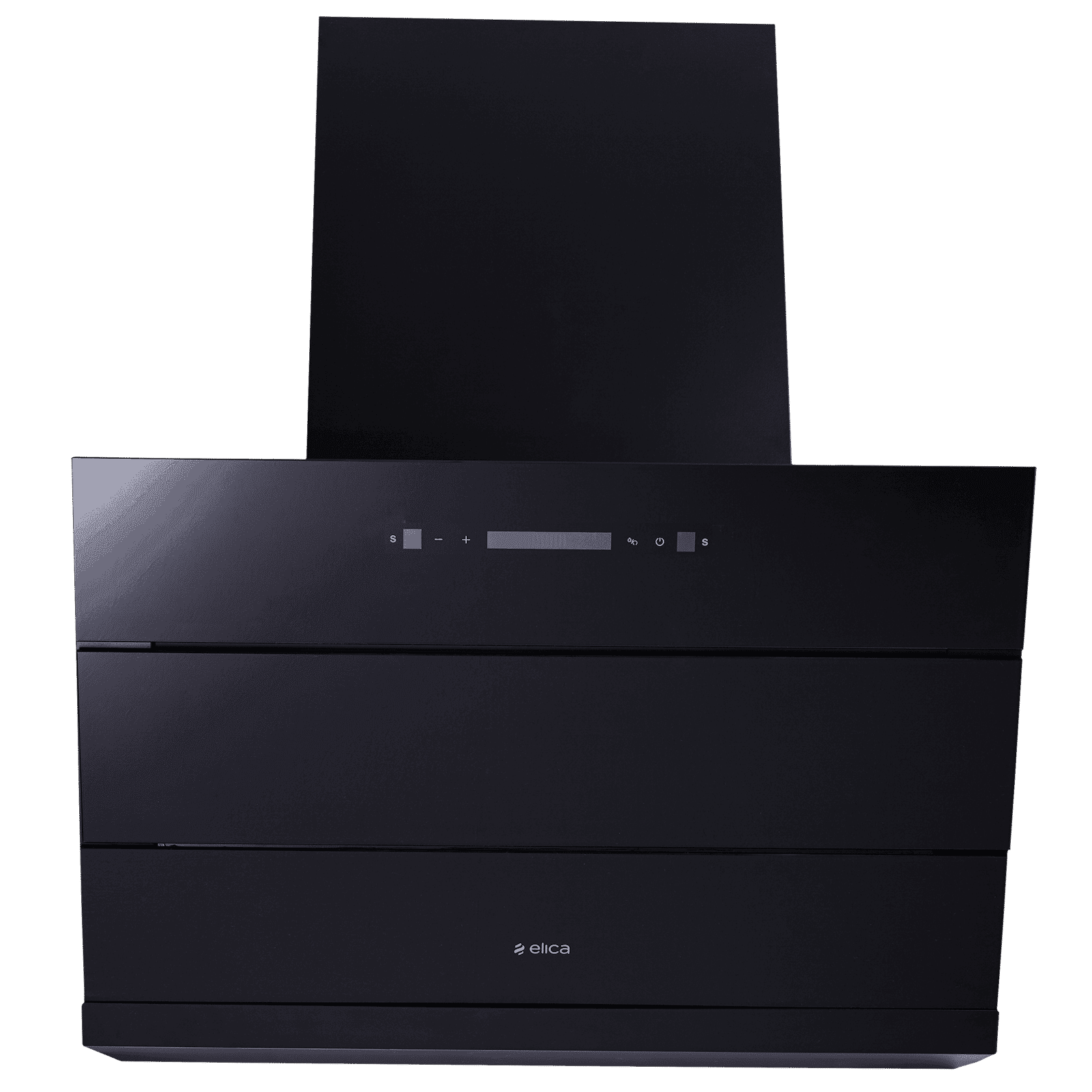
Home Appliances
•04 min read

Buy elica BFCG 600 HAC LTW MS NERO 60cm 1350m3/hr Ducted Auto Clean Wall Mounted Chimney with Touch Control Panel (Black) online at best prices from Croma. Check product details, reviews & more. Shop now!
Achieving the perfect kitchen setup isn’t just about aesthetics—it’s about functionality. One crucial detail often overlooked is the correct Kitchen Chimney installation height. Not only does proper chimney placement ensure an elegant kitchen look, but it also plays a vital role in effective smoke removal and overall safety. In this comprehensive checklist guide, you will learn everything from the ideal height for a Kitchen Chimney to the step-by-step process of installation. By following these recommendations, you'll avoid common pitfalls like smoke accumulation, reduced suction efficiency, and potential safety hazards.
Correct chimney placement is crucial for efficient smoke and odour removal, as a well-placed chimney ensures that harmful particles do not linger in your cooking area. An incorrectly positioned appliance can be a safety hazard while compromising the overall performance of your kitchen setup. This guide highlights the need for proper clearance and alignment, which can significantly impact the appliance’s suction power and even enhance the cooking experience.
Several factors affect the execution of the correct chimney placement. The type of stove, for instance, whether gas or electric, will dictate the ideal chimney height from the stove. Kitchen layout matters too; kitchens with lower ceiling heights or unique configurations may require further adjustments. Moreover, the chimney's suction capacity is a major consideration – a higher suction capacity may allow for slightly higher installation, but this must be balanced with good clearance and proper spacing.
Industry recommendations suggest that the chimney height from stove should typically range between 24–30 inches for gas stoves and 28–32 inches for electric stoves. It is important to note that these measurements may vary slightly depending on the specific chimney model. Adhering to these guidelines will ensure that your appliance performs at its best by effectively capturing smoke and pollutants during cooking.
The 3/2/10 rule provides a clear guideline: maintain a minimum distance of 3 feet above the cooktop, 2 feet below the ceiling, and ensure that there are at least 10 feet of clearance from any obstructions. This simple calculation method aids in achieving the ideal height for kitchen chimney installation. Following this rule not only enhances functionality but also contributes to a streamlined and modern kitchen aesthetic.
Different cooking surfaces, such as gas stoves, induction cooktops, or electric ranges, require specific height adjustments. In compact kitchens or in open layouts, you may need to modify the standard guidelines slightly for optimal performance. For instance, induction cooktops might benefit from a slightly elevated chimney to prevent any interference with the magnetic fields, while traditional gas stoves adhere closely to the standard measurement.

Buy elica PRO PLUS FL BLDC 75cm 1600m3/hr Ducted Auto Clean Wall Mounted Chimney with Motion Sensor Control (Black) online at best prices from Croma. Check product details, reviews & more. Shop now!
Before beginning the installation, take some basic measurements. Start by measuring the distance between your cooktop and the ceiling. Confirm that there is an electrical outlet placed at an appropriate height—ideally 6–12 inches above where you plan to install the chimney—to prevent wire tangling. Finally, check that the chimney model you have is compatible with your kitchen’s specific layout and dimensions.
Begin by marking the precise location for the chimney based on the recommended height and clearance guidelines. Carefully align the outlet pipe and secure the chimney to ensure proper airflow. It is essential during the installation to maintain a high level of precision to ensure both performance and safety. Following proper alignment and clearance practices are best practices for chimney setup that contribute to long-term efficiency.
After installation, it is time to verify the appliance’s performance under normal cooking conditions. Check suction efficiency to confirm that smoke clearance is optimal. Inspect the chimney’s alignment and ensure that all mounting fixtures are secure. Undertake a brief test by cooking a simple meal to view the chimney’s performance in real time. This careful process guarantees that all elements of the installation are up to standard.
Pro Tip: "Did you know? Installing your kitchen chimney at an incorrect height can reduce its suction efficiency by up to 30%. Always follow the manufacturer’s guidelines and consider your kitchen’s layout to achieve the perfect balance of functionality and aesthetics."
To maintain the efficiency of your chimney, regular maintenance is crucial. Consistent cleaning prevents blockages and keeps the suction power at its peak. Keep your cooking area clutter-free to avoid obstructions that might affect airflow. Moreover, ensuring adequate ventilation in your kitchen is an essential element that contributes to the appliance's overall performance. Following these simple yet effective kitchen appliance installation tips will prolong the lifespan of your chimney and enhance your cooking experience.
Avoid installing the chimney too high or too low from the cooktop, as either extreme can harm the appliance’s functionality. Do not overlook the alignment of the outlet pipe—poor alignment can lead to inefficient smoke dispersal and unnecessary hassle during maintenance. Lastly, never underestimate the importance of regular cleaning and prompt replacement of filters to ensure that your chimney remains at its best performance.

Buy elica EFL 3V 751 BLDC HAC LTW MS NERO 75cm 1500m3/hr Ductless Auto Clean Cabinet/Hob Mounted Chimney with Motion Sensor Control (Black) online at best prices from Croma. Check product details, reviews & more. Shop now!
The ideal installation height is typically 24–30 inches above gas stoves and 28–32 inches above electric stoves, considering the specific chimney model and kitchen layout.
This rule dictates a minimum distance of 3 feet above the cooktop, 2 feet below the ceiling, and 10 feet of clearance from obstructions, ensuring proper chimney placement.
It is recommended to install the plug point 6–12 inches above the maximum chimney height, which helps in maintaining a neat setup.
The outlet pipe should be aligned with the chimney’s exhaust system, allowing smooth airflow with a slight upward angle for efficient operation.
Typically, the maximum recommended height is around 30 inches for gas stoves, as higher placement might compromise suction efficiency.
This guide has walked you through the essential factors to consider for the best kitchen chimney installation height. By following the detailed checklist and guidelines provided, you can achieve a perfect balance between functionality and modern aesthetics, ensuring that your kitchen remains both safe and efficient. We trust that the insights shared here will empower you to carry out this task with confidence, leading to a highly efficient cooking environment and a design that truly stands out.
Explore more expert guidance on kitchen appliance installation tips and enjoy the rewards and convenience available when you choose a seamless, confident approach to your home’s setup.